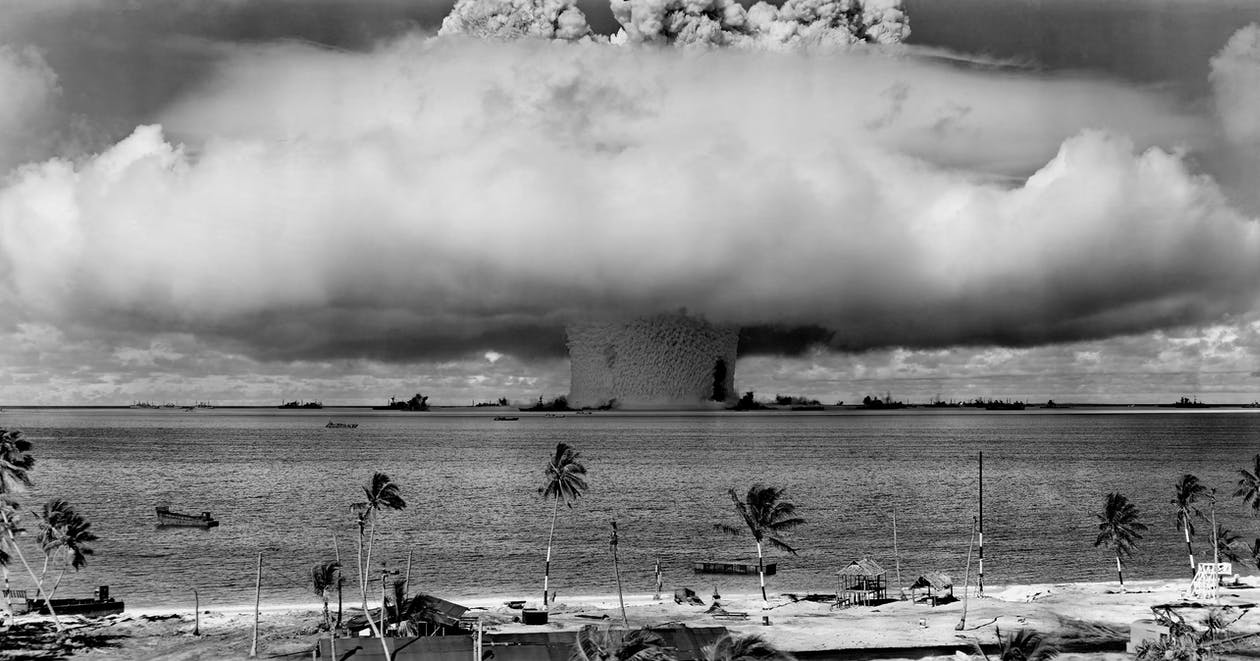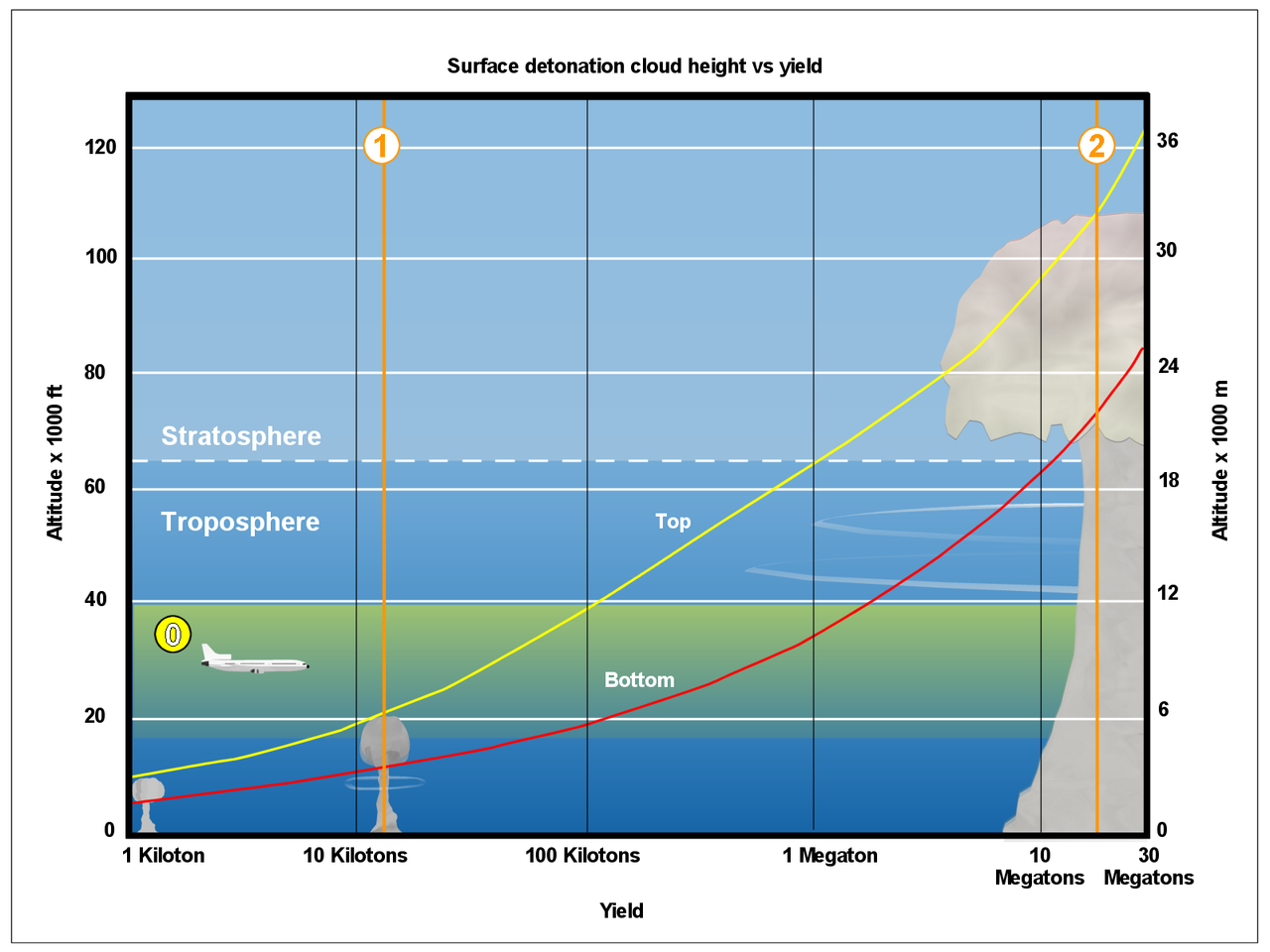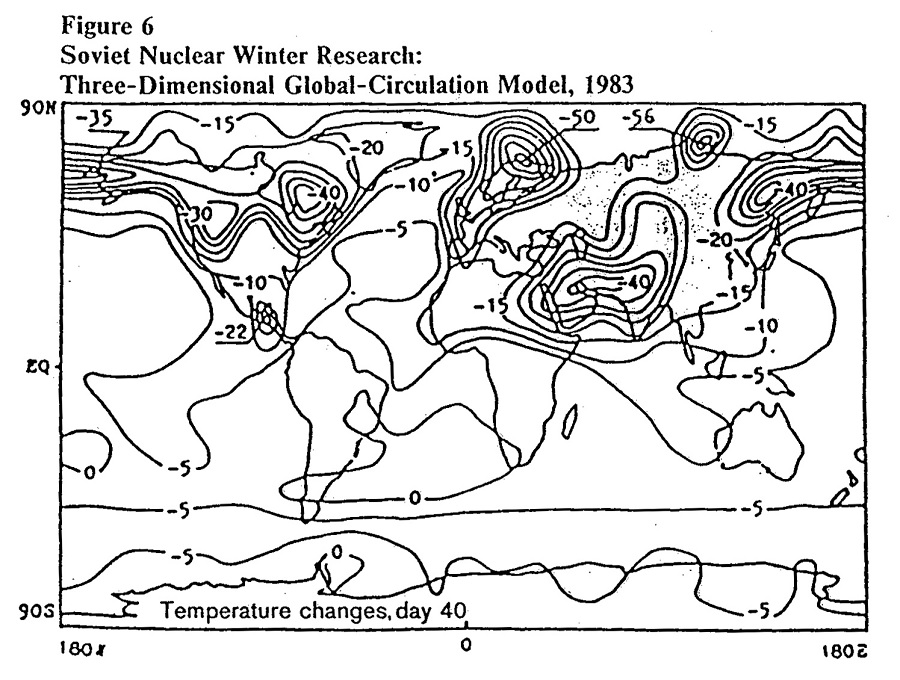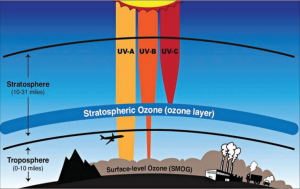
With tensions among nuclear weapon equipped countries growing, some are expressing concern about the threat of nuclear war and what a nuclear winter could look like after one. But what will happen in the event of a nuclear war to global weather and climate?
For starters, any nuclear war, whether it be a small-scale event or a full-blown global event, would have catastrophic impacts to life and property immediately with lingering, lasting impacts that could last generations. Nuclear weapons are weapons of mass destruction; in contrast to conventional warfare and conventional bombs, nuclear weapons can produce destruction in a much shorter time and can have a much longer-lasting impact due to radiological issues.
A nuclear war on a regional scale would instantly claim millions of lives; on a global scale, the number of deaths would be in the billions. But while fighting nuclear states would aim to take out major population centers and/or cities of significant importance, billions of people living in more rural areas are likely to survive the immediate blasts. What happens next though is in doubt and subject of scientific debate.
One potential theory of the aftermath of a nuclear was is the presence of a nuclear holocaust. In this theory, the mass detonation of nuclear weapons would create not only widespread destruction, but a tremendous amount of radioactive fallout which in turn would kill billions, if not everyone. Some scientists believe the fallout alone could lead to the extinction of humanity or overall termination of life on earth. But there is great debate here with how severe such an event would be. While radiation sickness from fallout would be an issue, weather patterns and air flow at the time of the nuclear war could steer radioactive debris in some directions but not the others. While much of modern technology would be destroyed around the world due to electromagnetic pulses, there are scientists that believe humans would still survive.

Whether or not humans survive the initial blasts and radioactive fall-out aside, some scientists also believe some kind of nuclear twilight or nuclear winter would occur after a nuclear war. But even here, scientists have very different hypotheses of what would happen in an actual nuclear winter.
A nuclear winter is theorized to occur in the wake of widespread firestorms that would occur as the result of a nuclear weapons attack; it is believed the smoke and soot from such fires would alter climate and weather. Scientists base their views on these scenarios on the observations made in the Hiroshima attack on Japan in World War II, on various nuclear weapons tests conducted by both the United States and the former Soviet Union, and on large scale industrial and wild fires that eject smoke and debris into the sky. The general hypothesis is that smoke and soot from these massive explosions and fires found in a nuclear blast would make their way to the upper levels of the troposphere and into the stratosphere, where it would be able to block out a significant amount of solar radiation from reaching the surface of the Earth.

While scientists agree adding smoke and soot to the atmosphere would lead to global cooling, some forecasts are much more drastic than others. Some computer models suggest a global cooling average of a few degrees Celsius over a year, while other models suggest a much more dramatic temperature departure in as little as 40 days. Either way, significantly colder temperatures would be very disruptive to life, killing or damaging whatever crops that could be left growing in the wake of a nuclear war.

Because nuclear detonations also produce large amounts of nitrogen oxides by breaking down the air around them, those rising oxides could destroy the ozone layer which protects the Earth’s surface from harmful radiation from the Sun. A study published in 2008 in the Proceedings of the National Academy of Sciences suggested that a regional nuclear conflict between two countries, such as Pakistan and India, would create a near-global ozone hole which would lead to the Earth’s surface being bombarded by harmful UV radiation everywhere. In that instance, while the nuclear bombs only destroyed regional cities there, the resulting ozone depletion could lead to a surge of cancer and loss of life of humans, animals, and plants world-wide.
A Nuclear Winter may not be the only meteorological problem for nuclear war survivors to deal with. Beyond a Nuclear Winter, some scientists also believe a Nuclear Summer would come. With so many fires burning and so many people and animal bodies rotting, the decay of organic matter and methane could flood the atmosphere with greenhouses gases. Unlike modern day greenhouse gas emissions, a nuclear winter could create thousands of times more greenhouse gas emissions than what’s produced today, and that in turn could create a “Nuclear Summer” of tremendous warming.
Any nuclear war, regional or global, could be catastrophic. Even if a nuclear war did leave behind millions of survivors in rural areas, the impacts of a nuclear holocaust, nuclear winter, ozone hole, or nuclear summer could kill off those survivors relatively quickly. For now, these post-nuclear war scenarios are merely theories; most hope those theories will never have to be tested.